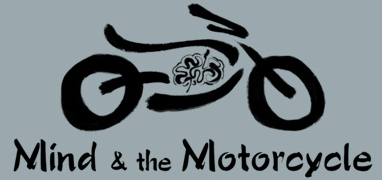Sandbars free of overnight clouds
village walls lit by the morning sun
a pristine pond encircled by trees
last night’s rain scattered by the wind
happy having nothing to do
my mind becomes one with all this
Liu Tsung-yuan (773-819) Chinese poet, Buddhist and prose writer of the T’ang dynasty.
I guess it must have been Monday, at the start of the week, when I saw that mysterious photograph, coupled with the above poem. Each morning, I receive messages from Tricycle, a Buddhist magazine. Both had a kind of creative synergy for me, but I wasn’t sure what to do with them.
After a week of ruminating, this Friday morning, it came to me. Without any forced, creative discipline or forethought, I would come home at the end of my day, today, and write about their combined effect on me and see what happens.
On occasion, I have been accused of stream of consciousness writing and it is not true. Stream of consciousness reminds of peeing on some rocks and walking away after, a thoughtless moment of expedience. I guess you could say a guy like Jackson Pollack was an artist in that visual genre. It worked OK for him!
I have never published anything without looking at it for a couple of days. This way, the words and their intention have a chance to percolate and clarify. Our moods move at lightening speed, with our thoughts running behind them, in order to just catch up.
Now, let’s hear it for a rousing, who cares?
Yes, at the moment I am responding emotionally and impulsively to the pic and a poem. Dealing with words as a writer is a lot easier than creating the words to define an image. So, let us begin with the poem.
I think it is about seeing all things as they are, seeking a harmonious chorus of the senses, drawn together by the mind. Somehow, if you are able to walk through the world, seeing the beauty of things as they are, your mind is uncluttered, completely free to immerse itself in all that it encounters, as it encounters them.
It is a non-thinking kind of thinking. I love to call it the pre-conscious, that infinitely, immeasurable moment between the raw, intuitive charge, jet transported to the gut, where it takes up a rooted residence, then rifling to awareness in a blur. Taking flight in these moments engenders a kind of freedom without words, “when your mind becomes one with all this”.
It’s funny, I looked at the photograph, before I read the poem and I wasn’t sure what to make of it. There is a crudeness about it, looking like it was created when photography was in its infancy. Then, I wondered whether it was intentional or not, an artist’s contemporary interpretation, versus the limitations of the medium from an earlier time.
In a way, you can see in it what you want and interpret it as you like, which is what makes artistic expression so magical. It has a mysterious feel about it, a visual fog. It could be a moment, before the birthing sun burns off the shroud of morning mist. It could be the last moments of light, before total darkness descends. I would title it, “I See”.
I confess to sometimes reaching out for the Buddha, especially when looking for the meaning of feelings and thoughts. I guess that is a bit misleading, because it is not about the guy, rather about what he had to say and how he said it. He would’ve been the first to say he was a humble messenger, simply sharing what he had experienced under the Bodhi Tree.
I have fleeting flashes, especially when I am sitting on the cushion in the morning darkness. I would say, it is 99% clutter, but every now then, cutting a single breath paper thin, one of those borderless, Liu Tsung-yuan moments happens, becoming invisible in my “oneness”.
Trust me, I have uncovered no secrets and never for a minute think I have arrived at any other place than exactly where I am, nothing special. In the world of Buddhism, particularly Zen, a big deal is made out of something called Enlightenment. In what I regard as a complete misinterpretation of this practice, it is a goal for many practitioners, a mirage for those who live in straight lines.
So, when I look at that photograph and read the poem, it’s like 1+1=3, each piece part of a single puzzle, ever so much larger than their aggregate. My reaction to them has been to try and write about the invisible, undefinable impact they’ve had on me.
The best part is you get to look at that haunting image and the accompanying poem. You can write your own story in your mind and hopefully let it travel to your heart, where your “oneness” abides.

